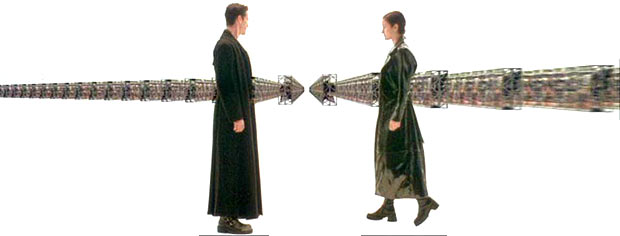Looking Outwards
(For a description of what a “Looking Outwards” assignment is, please see below.)
Summary of Looking Outwards Assignments
- (Due 1/16) New-Media Arts/Design. After foraging widely (consider this list of potential starting points), select three projects in the broadly-scoped field(s) of computational new-media arts and/or design. Choose one project that you admire profoundly (why?), one project that surprised you (why?), and one project that could have been great but disappointed you (why?). (Note: all projects should somehow have involved/required the creation of custom software.)
- (Due 1/21) Self-Quantification Tools. Forage widely in order to compile a set of at least three apps, workflows, software tools, measuring devices or other systems which you are interested in using to monitor yourself. You will be using these, for real, so look carefully, and decide which aspects of your life you will use them to track. There are many places to get started looking, including resources like: The Quantified Self Guide, where
you can find more than 500 different tools for collecting data about yourself (of which more than 300 are free); articles like the Beginner’s Guide to Quantified Self, which includes a curated List of the “Best Personal Data Tools Out There”; and other blogged lists such as this one. Your tools don’t have to be digital, as long as you can digitize the information they provide. Some tools that I especially admire, which are highly flexible and user-definable, are:
- (Due 1/23) Information Visualization. Browse various computational visualizations, designs, artworks, and datasets; choose 3 projects to write about. For diversity, consider selecting a balance of subjects, such as: a dataset that you find interesting; a project you find provocative; a project you find well-crafted. To find interesting visualization projects, you are welcome to start from the following links (and also look elsewhere):
As an alternative starting point, you may also consider looking at the work of Aaron Koblin, Amanda Cox, Ben Fry & Fathom, Fernanda Viegas, Giorgia Lupi, Jen Lowe, Jer Thorp, Jonathan Harris, Kim Rees, Lev Manovich, Lisa Jevbratt, Marcos Weskamp, Martin Wattenberg, Moritz Stefaner, Nicholas Felton, Rachel Binx, Stamen Design, Santiago Ortiz, Stephan Thiel & Nand.io, Stephanie Posavec, W. Brad Paley, Wes Grubbs, or CMU’s own Chris Harrison.
- (Due 1/28) openFrameworks. Discover and discuss three projects that were made in openFrameworks (OF). As a suggestion: For diversity, choose one project which seems like an important contribution to the field, and one project that seems like a quick but interesting sketch or experiment. To find interesting projects that use OF, you are welcome to start with the following (and you can also look elsewhere):
- https://vimeo.com/tag:openframeworks (4000+ videos)
- http://www.youtube.com/results?search_query=openFrameworks (2000+ videos)
- http://www.creativeapplications.net/index.php?s=openFrameworks (250+ projects)
You may also find it helpful to check out the work of people like: Andreas Mueller, Caitlin Morris, Chris O’Shea, Daito Manabe, Diederick Huijbers, Elliot Woods, Greg Borenstein, Jessica Rosenkrantz, James George, Joel Gethin Lewis, Josh Nimoy, Karolina Sobecka, Kyle McDonald, Memo Akten, Sofy Yuditskaya, Theo Watson and Emily Gobeille, and Zachary Lieberman, among many others.
- (Due 1/30) ofxAddons. Scan the master list of addons for openFrameworks. Select three that sound interesting to you (why?); explain their possible potential for you. Brainstorm a little.

- (Due 2/18) Interaction. Identify and discuss three projects that demonstrate interesting forms of interactivity.
- (Due 3/06) Capstone Research. Find prior work which is pertinent to the final project you would like to develop. How have others addressed similar questions as yourself? What work has inspired you? What opportunities were overlooked by others? Identify at least three relevant projects. Evaluate them aesthetically, technically, culturally.
What is a “Looking Outwards” Assignment?
On at least 8 occasions this semester, you will be asked to “look outwards” — to browse various blogs and feeds in order to deepen your knowledge of the field, and familiarize yourself with the current state of the art. You will then be expected to report on your findings, as described below — hopefully, with a critical perspective. Often, the “Looking Outwards” assignments will be thematically oriented. There is no restriction on the sources of information you may use for a “Looking Outwards” assignment — for example, you are welcome to use the library, especially to learn about older works which may not be well-documented on the Internet.
A “Looking-Outwards Assignment” is one blog post containing 3 discoveries.
The emphasis is on “discoveries” — browse blogs and other sources to encounter and report on three projects that you haven’t seen before. For this course, it may be most appropriate to select projects that are made by individuals or small teams, rather than large companies. In a blog post, embed relevant images or video of each project, and write a paragraph (~150 words) about each project, in which you:
- Explain the project in just a sentence or two;
- Explain what inspires you about the project (i.e. what you find interesting or admirable);
- Critique the project: describe how could it have been more effective; discuss some of the other possibilities that it suggests, or opportunities it missed; explain what you think they got right, and how they got it right.
- Dig up the ‘deep background’, and compare the project with related work or prior art, if appropriate. What sources inspired the creator this project?
- Please be sure to tag your blog post with our WordPress “category”, Looking-Outwards.
- Name your blog post(s) consistently, with the title YourName-LookingOutwards-1, etc.